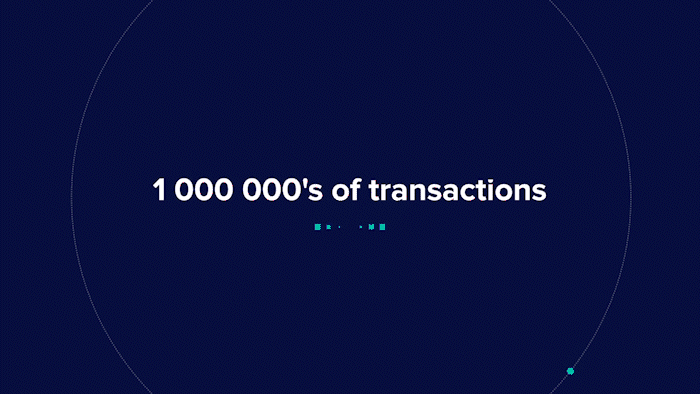Design is the silent ambassador of our intentions, a bridge between imagination and reality. It is not merely about aesthetics or functionality; it’s a profound expression of human thought and creativity. As I delve deeper into the world of design, I find myself contemplating its various facets and how they intertwine with our daily lives, shaping perceptions and experiences. In this exploration, I invite you to join me on a philosophical journey through the 10 different types of design, each a unique reflection of the human spirit seeking to balance art and practicality.
1. Brand Identity Design
At the core of any organization lies its identity—a complex tapestry woven from values, visions, and aspirations. Brand identity design is the art of encapsulating this essence into visual elements that resonate with both the company and its audience. It’s a dialogue without words, where logos, colors, and typography become symbols of deeper meanings.
In creating a brand identity, we act as mediators between the intangible soul of a company and the tangible world. It’s a process of distillation, stripping away the superfluous to reveal the purest form of expression. This form of design challenges us to ask: What truly defines us, and how do we wish to be perceived?

2. Marketing Design
If brand identity is the soul, then marketing design is the voice. It communicates, persuades, and engages, transforming abstract concepts into compelling narratives. Marketing design is not just about selling a product or service; it’s about telling a story that connects on a human level.
Here, the designer becomes a storyteller, crafting visuals that evoke emotions and inspire action. It’s a dance between creativity and strategy, where every element serves a purpose. We must consider: How can we touch hearts and minds, bridging the gap between desire and fulfillment?

3. Advertising Design
Advertising design takes the principles of marketing and amplifies them, reaching out to capture attention in a world saturated with messages. It is both an art and a science, requiring innovation to stand out while adhering to the timeless principles of effective communication.
In this realm, creativity knows no bounds. From billboards to digital ads, every medium offers a canvas for bold ideas. Yet, with this freedom comes responsibility. We must ponder: How do we create messages that not only attract but also respect and enrich the viewer’s experience?

4. User Interface (UI) Design
As technology becomes an extension of ourselves, UI design emerges as a crucial field that shapes our interactions with digital spaces. It is the point where human psychology meets technological innovation, requiring empathy and insight.
Designing interfaces is akin to crafting gateways between users and the vast potentials of technology. It demands simplicity without sacrificing depth, elegance without compromising functionality. The fundamental question arises: How can we make technology more accessible, intuitive, and human-centered?

5. Editorial Design
In an age where information is abundant, editorial design serves as the guide that leads readers through narratives, ideas, and knowledge. It is the architect of content, organizing chaos into clarity.
This discipline is more than arranging text and images; it’s about creating an immersive experience. Through thoughtful composition, pacing, and hierarchy, we influence how stories unfold. We are compelled to ask: How can we enhance understanding and enjoyment through the visual presentation of words?

6. Digital Design
Digital design transcends traditional boundaries, embracing the limitless possibilities of the virtual world. It encompasses web and app design, blending aesthetics with interactivity to create engaging experiences.
In this space, we are pioneers exploring new frontiers. The challenge is to humanize technology, making it not just a tool but an extension of our desires and needs. The philosophical inquiry becomes: What does it mean to exist in digital realms, and how can design foster genuine connections within them?

7. Packaging Design
Packaging design is where form meets function in the most tangible way. It is the first physical touchpoint between a product and the consumer, a silent handshake that conveys promise and quality.
Beyond mere containers, packages tell stories and evoke emotions. They protect, inform, and entice. Designers in this field must balance practicality with creativity, considering sustainability and consumer behavior. We must reflect: How do we create packaging that not only serves its purpose but also adds value to the product and respects the environment?

8. Event Video Design
In a world where experiences define our connections, Event Video Design emerges as a powerful medium to capture and enhance moments that matter. It is the art of weaving visual narratives that amplify the impact of events, transforming them into lasting memories.
Event Video Design transcends mere documentation; it involves crafting a story that reflects the essence of the occasion. Whether it’s a corporate conference, a product launch, or a cultural festival, the designer curates visuals that engage and inspire audiences both present and remote. This discipline challenges us to contemplate: How can we harness motion, sound, and emotion to not only record events but to elevate them, creating immersive experiences that resonate beyond the moment?
By integrating technology with creativity, Event Video Design bridges the ephemeral nature of live events with the enduring power of storytelling. It requires a deep understanding of cinematography, editing, and audience engagement. The designer becomes a conductor of visual symphonies, orchestrating elements to evoke desired responses.
9. Motion Graphics Design
Motion graphics bring static designs to life, adding the dimension of time to visual storytelling. In a world captivated by moving images, this form of design captures attention and conveys messages dynamically.
It’s an exploration of rhythm, pacing, and transformation. Motion designers craft experiences that can inform, entertain, and persuade. We are challenged to think: How does movement influence perception, and how can we harness it to create deeper engagement?
10. Art and Illustration in Design
At the heart of all design lies artistic expression. Art and illustration infuse projects with uniqueness and personality, bridging the gap between fine art and commercial application.
This field celebrates the handcrafted, the personal touch that technology alone cannot replicate. It’s a reminder of our humanity in an increasingly digital world. The essential contemplation is: What role does individual creativity play in a collective context, and how can art elevate design beyond the ordinary?

Find your niche
The world of design is as diverse as it is interconnected. Each type offers a different lens through which we can view and shape our reality. As designers, we are not just creators but philosophers, constantly questioning and redefining the boundaries between art and functionality.
In navigating these 10 types of design, I find that the common thread is the pursuit of meaningful connections—between people, ideas, and the world around us. It’s a journey of continuous learning and adaptation, embracing both the tangible and the intangible.
As I continue on this path, I am reminded that design is not just about solving problems or creating beauty; it’s about understanding the human condition and striving to enhance it through thoughtful, intentional creation.
Creative Design: 10 Types of Design by Evgeny Hanukov








Comments